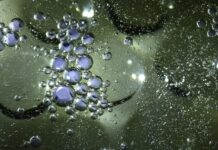Heparin ointment, a topical formulation enriched with the therapeutic agent heparin, emerges as a versatile solution for addressing a spectrum of skin-related concerns. This ointment, harnessed from the medical field’s depth of knowledge, offers a localized approach to managing conditions ranging from bruising and inflammation to varicose veins. In this comprehensive exploration, we delve into the intricacies of heparin ointment, examining its mechanisms, applications beyond traditional anticoagulation, and the role it plays in promoting skin health.
At its core, heparin ointment represents a convergence of medical insight and dermatological care. Heparin, a naturally occurring glycosaminoglycan, has long been recognized for its anticoagulant properties. However, its benefits extend beyond its systemic role in preventing blood clot formation. In the context of heparin ointment, this therapeutic agent is formulated for topical application, targeting localized concerns on the skin’s surface.
The mechanisms underlying heparin ointment’s effectiveness span multiple dimensions. Its anticoagulant property, derived from its ability to inhibit blood clotting factors, lends itself to applications in reducing bruising and hematoma formation. When applied to the skin, heparin ointment exerts its anticoagulant effect locally, preventing the accumulation of blood and promoting the dispersal of existing clots. This property proves invaluable in managing post-traumatic bruising, providing relief from the discomfort and discoloration associated with such injuries.
Beyond its anticoagulant prowess, heparin ointment exhibits anti-inflammatory properties that contribute to its therapeutic spectrum. Inflammation is a hallmark of various skin conditions, including dermatitis and eczema. Heparin’s ability to modulate inflammatory responses by interacting with various cytokines and growth factors positions heparin ointment as a valuable tool in managing such dermatological challenges. Its presence in the ointment aids in soothing irritated skin, reducing redness, and alleviating discomfort associated with inflammatory skin conditions.
Heparin ointment’s role extends to addressing the aesthetic concerns posed by varicose veins. These enlarged and often twisted veins can cause discomfort and affect the skin’s appearance. Heparin’s anticoagulant effect, combined with its ability to improve blood circulation, makes heparin ointment a potential complementary measure for managing varicose veins. Regular application of the ointment can aid in reducing inflammation and promoting blood flow, contributing to improved vein health and potentially mitigating symptoms.
The versatility of heparin ointment comes to the forefront in the realm of wound healing. Chronic wounds, often resistant to traditional treatments, present a significant challenge in clinical practice. Heparin’s multifaceted properties, including its anti-inflammatory and pro-angiogenic effects, align with the requirements for effective wound healing. By fostering an environment conducive to tissue repair, heparin ointment aids in accelerating wound closure and promoting the regeneration of healthy skin.
Furthermore, heparin ointment’s application isn’t limited to therapeutic interventions alone. Its potential as a preventive measure against skin damage is also noteworthy. For individuals prone to bruising due to fragile blood vessels or those engaged in activities with a higher risk of minor injuries, heparin ointment’s localized anticoagulant effect offers a proactive strategy to minimize the impact of trauma on the skin. This preventive aspect speaks to heparin ointment’s role in maintaining skin health and preventing complications arising from minor injuries.
The journey of heparin ointment isn’t confined to its immediate effects. It also opens avenues for research and innovation. Ongoing studies explore its potential applications in scar management, with researchers investigating how heparin’s modulation of collagen synthesis and remodeling processes could contribute to improved scar appearance. Additionally, its combination with other dermatological agents, such as corticosteroids or antioxidants, offers opportunities to enhance its therapeutic profile and cater to a wider range of skin concerns.
The adoption of heparin ointment within the realm of dermatology highlights the seamless integration of medical knowledge into specialized care. Its local application and targeted effects align with the principles of precision medicine – an approach that tailors interventions to individual needs. Heparin ointment, by addressing specific skin concerns without imposing systemic effects, exemplifies the harmonious balance between medical insights and dermatological well-being.
In conclusion, heparin ointment emerges as a potent testament to the potential that lies at the intersection of medicine and skin health. Its localized therapeutic benefits extend beyond its traditional role as an anticoagulant, encompassing wound healing, inflammation modulation, and even aesthetic concerns. The ability to harness heparin’s properties for skin-related challenges underscores the depth of medical innovation, offering a personalized approach to dermatological care. As research continues to unravel its mechanisms and expand its applications, heparin ointment holds the promise of promoting skin health and enhancing the quality of life for individuals navigating various skin concerns.
Localized Therapy:
Heparin ointment offers targeted treatment by applying the therapeutic benefits of heparin directly to the skin, addressing specific concerns without systemic effects.
Anticoagulant and Anti-Inflammatory Properties:
The ointment harnesses heparin’s dual properties, acting as an anticoagulant to prevent clot formation and as an anti-inflammatory agent to soothe skin irritation.
Bruising and Hematoma Management:
Heparin ointment’s anticoagulant effect aids in reducing post-traumatic bruising and hematoma formation by preventing blood accumulation and dispersing existing clots.
Varicose Vein Support:
The ointment’s combination of anticoagulant action and improved blood circulation contributes to managing varicose veins, addressing inflammation and discomfort associated with the condition.
Wound Healing Enhancement:
Heparin ointment’s multifaceted properties, including anti-inflammatory and pro-angiogenic effects, accelerate wound closure and promote the regeneration of healthy skin in chronic wound management.
Heparin ointment stands as a testament to the evolving landscape of medical interventions tailored to specific needs. Rooted in the medical domain’s rich legacy, it finds itself at the intersection of traditional medicine and modern dermatology. This convergence opens a world of possibilities where therapeutic insights are harnessed to address skin-related concerns, forging a path toward enhanced well-being and improved quality of life.
The journey of heparin ointment unfolds against the backdrop of dermatology’s intricate tapestry. Skin, often referred to as the body’s largest organ, serves as a protective barrier and a canvas through which various internal processes manifest. Skin health, therefore, holds intrinsic significance in overall well-being. The emergence of specialized interventions like heparin ointment is a response to the nuanced challenges that skin presents – challenges that range from aesthetic concerns to discomfort caused by inflammation or trauma.
Heparin ointment’s evolution reflects a dynamic shift in medical thinking – a shift from systemic interventions to targeted therapies. While systemic treatments have their merits, they often come with a spectrum of effects that extend beyond the target area. Heparin ointment, on the other hand, embodies precision medicine’s ethos, where interventions are tailored to a specific context. Its localized application underscores the principle that therapeutic benefits can be harnessed directly where they are needed, minimizing the impact on other bodily functions.
In the realm of dermatology, aesthetics and comfort often intertwine. Skin conditions that affect appearance can also lead to physical discomfort, impacting an individual’s quality of life. Heparin ointment addresses this duality by offering a multi-dimensional approach. Its ability to mitigate the physical manifestations of conditions – be it the discoloration of bruising, the inflammation of dermatitis, or the discomfort of varicose veins – resonates with the holistic understanding of well-being.
The narrative of heparin ointment is also interwoven with the intricacies of skin physiology. Skin’s complex structure houses an array of cells, tissues, and microenvironments that play roles beyond mere protection. The ointment’s application engages with this microcosm, interacting with the skin’s layers and influencing processes like blood flow, inflammation modulation, and tissue repair. This interaction highlights the nuanced interplay between external interventions and the body’s inherent mechanisms.
Furthermore, the evolution of heparin ointment’s applications speaks to the crossroads of medical innovation and patient-centric care. Traditional medical knowledge recognized heparin’s anticoagulant properties and its systemic role in preventing blood clot formation. However, it took a creative leap to adapt this understanding for dermatological needs. The transformation of heparin’s potential from systemic anticoagulation to localized therapeutic use exemplifies the dynamic nature of medical research and its ability to transcend traditional boundaries.
The journey of heparin ointment is one of constant exploration and refinement. Ongoing research endeavors explore its potential beyond its current applications. The formulation’s multifaceted properties offer avenues for investigating its impact on various dermatological challenges, from scar management to wound healing in different contexts. This spirit of inquiry propels medical professionals to explore how heparin’s unique characteristics can be leveraged to address evolving needs and challenges.
In the grand tapestry of medicine, heparin ointment occupies a unique niche – one where the interface of medical insights and dermatological care converges. It embodies the ethos of personalized medicine, where interventions are tailored to an individual’s unique requirements. The ointment’s ability to address specific skin concerns while respecting the body’s overall balance and functionality marks a stride forward in the pursuit of optimal health.
In conclusion, heparin ointment’s journey is a narrative of convergence – of scientific understanding, medical innovation, and dermatological care. Its localized therapeutic potential bridges the gap between systemic treatments and precise interventions, offering a means to address a spectrum of skin-related concerns. From harnessing heparin’s anticoagulant and anti-inflammatory properties to delving into its multifaceted applications, heparin ointment emerges as a testament to the evolving landscape of medicine and its ongoing quest to enhance human well-being. As research continues to illuminate its mechanisms and expand its horizons, heparin ointment holds the promise of reshaping dermatological care and redefining our approach to skin health.


















